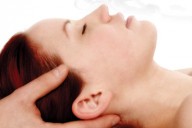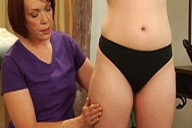Different Waxing Methods
0The rapid growth of waxing treatments in the health and beauty industries is largely due to waxing specialists becoming well-versed in advanced waxing techniques, while complementing them with advanced delivery systems that offer more hygienic approaches. Technicians are also going that extra mile to educate their clients on the importance of after-care by offering a selection of retail take-home products.
Waxing is an extremely safe way to remove unwanted hair and it is one of the most lucrative treatments offered by a spa, due to its low upfront costs. An $11 can of wax may return up to $900 in services. So, if your establishment is not waxing, it may be time to consider it. And here is how to get started.
Waxing systems
Buying a pre-assembled waxing starter kit is no different than buying a car. It is an investment, and you should take every step to research your purchase thoroughly. Do not just seek the most inexpensive one. Examine its features and benefits. Check that the equipment is listed and tested by Underwriters Laboratories (UL)—a trusted product compliance source—and that is it easy to keep clean. Ask yourself how hygienic the system is, and does it look sturdy enough, because this system will be put to the test once you get going.
A good kit will contain all the necessary pre- and post-waxing products—wax strips and applicators; two to three types of waxes consisting of a cream, honey and hard wax; equipment cleaner; wax heater; training 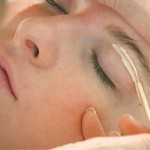 element; warranty card; multilingual written instructions; tweezers; powder; wax collars; wax removal oil; and equipment cleaner. If the kit contains posters and window decals, that is a bonus.
element; warranty card; multilingual written instructions; tweezers; powder; wax collars; wax removal oil; and equipment cleaner. If the kit contains posters and window decals, that is a bonus.
Do you have any idea of what waxing method you want to offer? Some of the most popular options include the following.
Pot method. This method features wax that is heated to the correct temperature and consistency in a UL-approved wax heating device before application. The wax is removed from the pot with a plastic, stainless or wooden disposable waxing applicator and then applied to the hair on the area of the body to be waxed. This method gives the therapist more versatility and control because both soft and hard waxes can be heated in this type of system to accommodate services from legs to eyebrows. Pot waxes can remain hygienic if the lid is kept on the system when it is not in use and if the technician uses a clean spatula with each application.
Roll-on method. This method is becoming increasingly popular because it enables the therapist to deliver a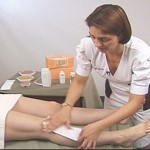 variety of cream or honey soft waxes onto the skin in an even, consistent manner with little to no waste. It is ideal for speed waxing of the legs, chest, back and arms. Some systems now provide wax cartridges with interchangeable heads, ranging from extra small for those hard-to-reach areas, such as ears; small for facial waxing; and large for the legs, chest and back. The method is hygienic because a fresh applicator head can be attached to the cartridge for each client. Roller waxing systems work with soft wax only. Be sure to choose a system that heats the cartridge or tube at a steady temperature during wax applications.
variety of cream or honey soft waxes onto the skin in an even, consistent manner with little to no waste. It is ideal for speed waxing of the legs, chest, back and arms. Some systems now provide wax cartridges with interchangeable heads, ranging from extra small for those hard-to-reach areas, such as ears; small for facial waxing; and large for the legs, chest and back. The method is hygienic because a fresh applicator head can be attached to the cartridge for each client. Roller waxing systems work with soft wax only. Be sure to choose a system that heats the cartridge or tube at a steady temperature during wax applications.
Wax optionsThere are many waxes on the market that are available in different sizes, colors, textures and even fragrances; however, it can be a challenge for even the most skilled therapist to choose the right wax for each job. Following are the different wax options available.
Stripless waxes. Also known in the industry as hard wax, which can only be heated via the pot method. Hard 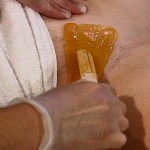 waxes tend to come in solid colors and are blended with rosins for slower setting times, giving the therapist a little more control with the removal. In some cases, plasticides are added for additional flexibility and control. Stripless waxes are ideal for Brazilian bikini procedures, as well as for underarms and facial waxing. Strip waxes run at a lower temperature than soft waxes and, as they are applied, they dry gently, shrinking around the hair shaft, resulting in successful hair removal with little to no irritation. Hard waxes are removed without a waxing strip, hence the name stripless.
waxes tend to come in solid colors and are blended with rosins for slower setting times, giving the therapist a little more control with the removal. In some cases, plasticides are added for additional flexibility and control. Stripless waxes are ideal for Brazilian bikini procedures, as well as for underarms and facial waxing. Strip waxes run at a lower temperature than soft waxes and, as they are applied, they dry gently, shrinking around the hair shaft, resulting in successful hair removal with little to no irritation. Hard waxes are removed without a waxing strip, hence the name stripless.
Strip waxes. Also known as soft waxes, these are most commonly used with roll-on waxing systems. Mainly composed of resins to increase setting time, strip waxes are often blended with additional essential oils for special skin conditions and types, and come in many varieties. Soft waxes are applied onto the skin in the thinnest layer possible in the direction of hair growth. This is followed by the removal of the wax in the opposite direction with a fabric or paper strip, depending upon the therapist’s preference. Strip waxes can be used on any area of the body.
Fabric versus paper strip. Fabric strips are generally made from some type of bleached or unbleached cotton, are extremely flexible, and some consider them to be less painful and, therefore, ideal for facial waxing. Paper strips are more rigid and more suitable for speed waxing. They are economical because they can be utilized as a continuous-use strip during a leg-waxing procedure.
Post-care for waxing
There is no question that waxing has been one of the strongest hair removal trends for decades, however there are often complaints after a treatment due to improper post-care. Common concerns include, “I had my eyebrows waxed yesterday and have a nasty rash where the wax was applied. There is lots of redness and some bumps,” or “I just had my chest waxed yesterday and I have this terrible breakout with redness, swelling and dozens of whiteheads all over.
This article was originally published in the July 2008 issue of Skin Inc. Magazine and is being reprinted with permission. All right reserved.
If you would like to learning waxing techniques, Aesthetic VideoSource has Waxing DVD’s on a variety of different topics. Eyebrow Waxing, Body Waxing for men and women and Brazilian Waxing techniques. Visit us today and view free excerpts of our educational DVD’s. Our videos show all the above mentioned types of waxing.

